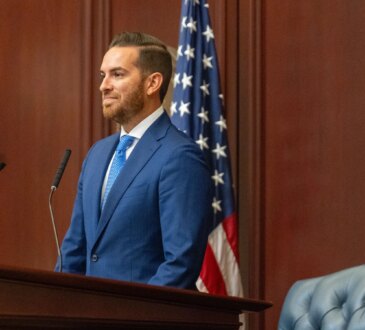Sen. Kesha Ram Hinsdale: Vermonters asked us to tackle the real cost drivers to the property tax — and we did
This commentary is by Sen. Kesha Ram Hinsdale, D-Chittenden Southeast. She is the Vermont Senate majority leader and a member of the Senate Economic Development and Education Committees. She lives in Shelburne with her husband and two young children.

As Vermont debates how to stabilize our education finance system, it’s easy to get caught in the cycle of blame. But the challenges we’re seeing in our school budgets didn’t emerge in a vacuum. The real cost pressures driving up education spending are rooted in broader systems — housing, health care, mental health and basic affordability. This year, we tackled those head-on.
As a lead architect of S.127, I’m proud to say we passed a $2 billion infrastructure package — the largest investment in housing and infrastructure in Vermont history. This landmark legislation is more than a housing bill — it’s a long-term strategy to support families, educators and entire communities.
When children are forced to move multiple times in a school year, when teachers can’t afford to live near the schools where they work, when families are priced out of the very communities that anchor them — our schools bear the consequences. S.127 cuts through decades of gridlock to deliver major investments in water, sewer and energy infrastructure, which will in turn increase the supply of homes that Vermonters can actually afford.
At the same time, under the steadfast leadership of my district-mate, Sen. Ginny Lyons, the Legislature made meaningful progress on one of the biggest drivers of public and private costs: health care. Sen. Lyons has been a tireless champion for reform, and this year, her work resulted in crucial steps to rein in runaway prescription drug prices and bend the cost curve that has strained families, hospitals and school budgets alike. These reforms begin to address the systemic issues that have long placed education spending under undue pressure from a budget being eaten away by unsustainable health care costs.
We also made major strides in addressing one of the most urgent and growing challenges our schools face: youth mental health. Rising levels of anxiety, depression and behavioral health crises have placed an enormous burden on educators and school budgets.
This year, we responded with the “Kids Code” (S.69) and the “Phone-free Schools” bill (now a part of H.480) — two groundbreaking bills that tackle the impact of digital platforms and device addiction on young people’s mental health and cognitive development.
The Kids Code puts guardrails around tech companies, requiring them to design digital products with child safety in mind — not profit. Phone-Free Schools empowers districts to limit in-school smartphone use so students can focus, connect face-to-face and learn in healthier environments. These policies are about more than screen time; they’re about protecting kids’ well-being and reducing the downstream costs — academic, behavioral, and emotional — that schools are increasingly expected to manage on their own.
Finally, as we look to education finance reform, we need to be honest about where the money is — and where the pressure is coming from. One of the most meaningful changes we could make to our education finance system is to tax property vacancy. Right now, there’s often more financial incentive to leave a commercial or residential property empty than to rent it.
In over 80 towns across the state, the “non-homestead” property tax rate is lower than the homestead property tax rate, meaning second homeowners pay less than permanent residents. That’s hollowing out both our main streets and our backroads.
Empty storefronts and unoccupied homes erode the vitality of our communities and shrink the tax base that supports our schools. Rather than racing to consolidate schools or cut programs, we should be modernizing our tax code to reflect the actual drivers of inequity and revenue loss. The money is there — it’s just too often sitting behind shuttered windows and underused properties while school budgets take the hit.
Yes, we should explore district consolidation — but only when it truly benefits kids and their educational outcomes. Vermont’s small schools are often the heart of their communities, and closing them indiscriminately won’t solve the affordability crisis. We cannot expect our education system to compensate for housing shortages, inadequate health care, youth mental health crises or systemic poverty — and then punish it when it can’t.
We’ve taken bold, historic steps to address the housing, health care and mental health challenges that have long burdened our schools. Let’s acknowledge that progress and use it as a springboard to real, thoughtful education finance reform — one that uplifts our communities instead of dividing them.
Let’s lead with values. Let’s tackle the rising costs and tax disincentives that hollow out our communities and invest where it makes a real difference — in children, families and vibrant neighborhoods. That’s how we build a future where every child has the opportunity to thrive.




